Leshy: Master Of Forest And Wildlife In Slavic Beliefs
A. Sutherland - AncientPages.com - A forest is an exceptional place where the passage of time ceases to have meaning. It simply does not exist. Each forest has its guard. In Slavic mythology, it is a creature goat-footed woodland sprite known as Leshy.
Home of the Leshy. Fairy Forest at Sunset by Ivan Bilibin, 1906. Image credit: Ivan Bilibin - Public Domain
According to the early Slavic people, especially those who lived in heavily forested areas, Leshy looked like a person, but his appearance was described differently. He was often a masculine and mortal humanoid creature that could punish for killing an animal from his herd without permission.
He was the most powerful ruler of the forest and wildlife. He ruled over success, hunting, and happiness, cared for pets, and helped the poor.
All plants, fruits, and animals in the forest belonged to him, and Leshy drew its power from the surrounding trees; a strong forest had a guard with much more power than the weaker one.
Many Slavic tales mention forest wanderers, who encountered Leshy, and the course of this meeting often depended on how much a person had on his conscience.
He was depicted in human form or dressed in animal skins, and a deer and a wolf represented his symbolic animal. However, as some say, this absolute master of the forest is an earthly materialization of Bog Veles himself.
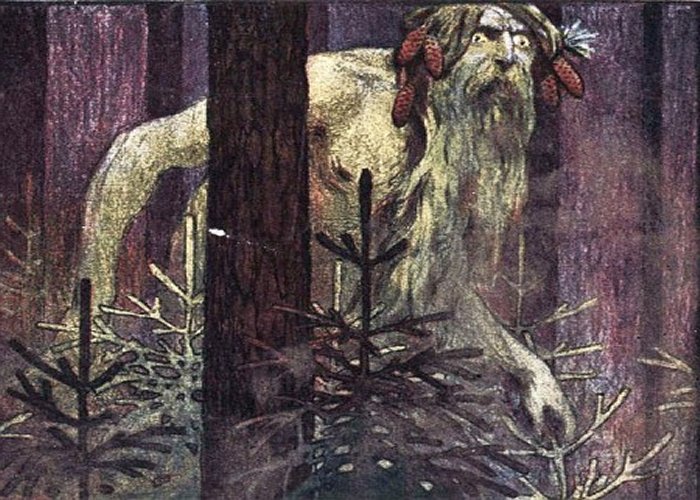 WITH cover of Magazine’s «Leshy» № 1-1906. Image credit: Leshy - Public Domain
WITH cover of Magazine’s «Leshy» № 1-1906. Image credit: Leshy - Public Domain
Some believed that Leshy was an earthly materialization of Veles, a god of cattle and wildlife. Meanwhile, others considered Leshy a servant of Veles.
He was often hostile towards people and could scare them his laughing or sending wild animals or confuse a man in the forest so much that he could not find a way back. Besides getting angry, Leshy could send predators upon domestic cattle and even kidnap a child.
If a person could find a way to communicate with Leshy in the forest, Leshy would show that person the "hidden paths" of the forest, leading that person through the woods in the shortest amount of time. Our ancestors trusted Leshy and would even leave small children under his care during harvest.
A child was often left near the field and by the entrance to the forest. Leshy was asked to watch over the child; parents could work in the field to collect the harvest. Leshy would not only protect the child from wild animals but could also send animals and other spirits of the forest to protect that child from people with ill intent and dark spirits." 1
Leshy could easily change its size and height, but he was seldom seen, though many heard his powerful laughing, whistling, or singing.
When he was occasionally spotted, he was quickly recognized because he appeared to be a very tall man with an unnaturally white face, whose hair resembled pine needles. In contrast, his skin had a bark-like appearance. His right ear, eyebrows, and eyelashes were missing; his head was somewhat pointed.
For our forefathers, the forest was almost a sacred sphere. Perhaps for many of us, this special place is still holy even today because its history is much longer than human history.
Updated on August 4, 2022
Written by – A. Sutherland - AncientPages.com Senior Staff Writer
Copyright © AncientPages.com All rights reserved. This material may not be published, broadcast, rewritten or redistributed in whole or part without the express written permission of AncientPages.com
Expand for referencesReferences:
- Kushnir, D. Creatures of Slavic Myth
More From Ancient Pages
-
![Photo taken on Dec 20, 2015 shows hoof-shaped gold ware unearthed from the main coffin in the Haihunhou (Marquis of Haihun) cemetery, East China's Jiangxi province. [Photo/Xinhua]](https://www.ancientpages.com/wp-content/uploads/2015/12/MarquisofHaihuntomb1-307x150.jpg) Does A 2,000-Year-Old Tomb Belong To Marquis of Haihun? – Search For His Seal Continues
Archaeology | Dec 25, 2015
Does A 2,000-Year-Old Tomb Belong To Marquis of Haihun? – Search For His Seal Continues
Archaeology | Dec 25, 2015 -
 Top 5 Terrors Of The World’s Seas, Rivers And Lakes
Featured Stories | Mar 27, 2021
Top 5 Terrors Of The World’s Seas, Rivers And Lakes
Featured Stories | Mar 27, 2021 -
 Unorthodox Ancient ‘Out-Of-This World’ Carvings Were Found And Destroyed – Mysterious Labyrinth And Unknown Ruins – Part 2
Ancient Mysteries | Aug 13, 2020
Unorthodox Ancient ‘Out-Of-This World’ Carvings Were Found And Destroyed – Mysterious Labyrinth And Unknown Ruins – Part 2
Ancient Mysteries | Aug 13, 2020 -
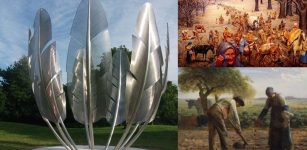 Kindred Spirits: Why Did The Irish Build A Monument In Honor Of Native Americans?
Ancient History Facts | Oct 22, 2016
Kindred Spirits: Why Did The Irish Build A Monument In Honor Of Native Americans?
Ancient History Facts | Oct 22, 2016 -
 Ancient Mysteries Of West Virginia: Did Ancient Celts Visit North America Where They Left An Ogham Inscribed Bone Needle With Christian Symbols?
Artifacts | Mar 1, 2017
Ancient Mysteries Of West Virginia: Did Ancient Celts Visit North America Where They Left An Ogham Inscribed Bone Needle With Christian Symbols?
Artifacts | Mar 1, 2017 -
 Face Of Egyptian Man Who Lived 35,000 Years Ago Reconstructed
Archaeology | Apr 7, 2023
Face Of Egyptian Man Who Lived 35,000 Years Ago Reconstructed
Archaeology | Apr 7, 2023 -
 Interbreeding With Modern Humans Wiped Out Neanderthals’ Y Chromosomes 100,000 Years Ago
Archaeology | Sep 28, 2020
Interbreeding With Modern Humans Wiped Out Neanderthals’ Y Chromosomes 100,000 Years Ago
Archaeology | Sep 28, 2020 -
 Anglo-Saxon Harpole Treasure Reveals More Secrets – Unique Medieval Silver Cross Found
Archaeology | Jan 31, 2023
Anglo-Saxon Harpole Treasure Reveals More Secrets – Unique Medieval Silver Cross Found
Archaeology | Jan 31, 2023 -
 Parthians: Their Great Empire And Skilled Horse Archers
Civilizations | Nov 10, 2016
Parthians: Their Great Empire And Skilled Horse Archers
Civilizations | Nov 10, 2016 -
 Torquetum: Sophisticated Medieval Astronomical Instrument
Ancient History Facts | Jul 12, 2018
Torquetum: Sophisticated Medieval Astronomical Instrument
Ancient History Facts | Jul 12, 2018 -
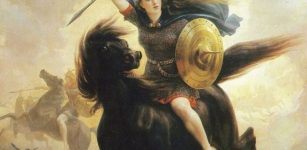 Mysterious And Powerful Valkyries In Norse Mythology: The Choosers Of The Slain
Featured Stories | Dec 1, 2015
Mysterious And Powerful Valkyries In Norse Mythology: The Choosers Of The Slain
Featured Stories | Dec 1, 2015 -
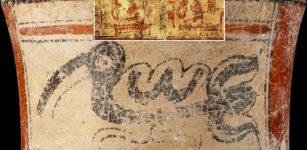 Non-Royal Elite Burial And Deciphered Hieroglyph Reveal Privileged And Hard Life Of Maya Ambassador
Archaeology | Mar 18, 2021
Non-Royal Elite Burial And Deciphered Hieroglyph Reveal Privileged And Hard Life Of Maya Ambassador
Archaeology | Mar 18, 2021 -
 Forseti: Norse God Of Justice And Lawmaker Who Lived In A Shining House
Featured Stories | May 1, 2016
Forseti: Norse God Of Justice And Lawmaker Who Lived In A Shining House
Featured Stories | May 1, 2016 -
 Secrets Behind 2,000-Year-Old Roman Water Management Revealed
Ancient Technology | Aug 4, 2023
Secrets Behind 2,000-Year-Old Roman Water Management Revealed
Ancient Technology | Aug 4, 2023 -
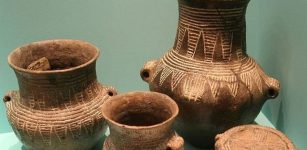 Corded Ware Culture: Skillful Female Artisans Produced Extremely Innovative Pottery 5,000 Years Ago
Archaeology | Mar 30, 2018
Corded Ware Culture: Skillful Female Artisans Produced Extremely Innovative Pottery 5,000 Years Ago
Archaeology | Mar 30, 2018 -
 Secret Tunnels Used By Knights Templar Leading To The Treasure Tower – Discovered
Archaeology | Oct 29, 2019
Secret Tunnels Used By Knights Templar Leading To The Treasure Tower – Discovered
Archaeology | Oct 29, 2019 -
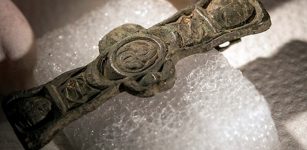 Medieval Irish Book Fitting Among Historical Finds Unearthed In Old Cemetery In Norway
Archaeology | Dec 15, 2017
Medieval Irish Book Fitting Among Historical Finds Unearthed In Old Cemetery In Norway
Archaeology | Dec 15, 2017 -
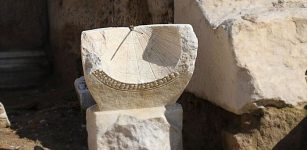 2,000-Year-Old Sundial Discovered In Ancient City Of Laodicea, Turkey
Archaeology | Mar 25, 2020
2,000-Year-Old Sundial Discovered In Ancient City Of Laodicea, Turkey
Archaeology | Mar 25, 2020 -
 On This Day In History: Battle of Castillon Ended ‘Hundred Years’ War – On July 17, 1453
News | Jul 17, 2016
On This Day In History: Battle of Castillon Ended ‘Hundred Years’ War – On July 17, 1453
News | Jul 17, 2016 -
 The Perplexing Story Of The Seven Continents And The Seven Mysterious Races – Can The Past Foretell The Future? – Part 2
Ancient Mysteries | May 15, 2022
The Perplexing Story Of The Seven Continents And The Seven Mysterious Races – Can The Past Foretell The Future? – Part 2
Ancient Mysteries | May 15, 2022

